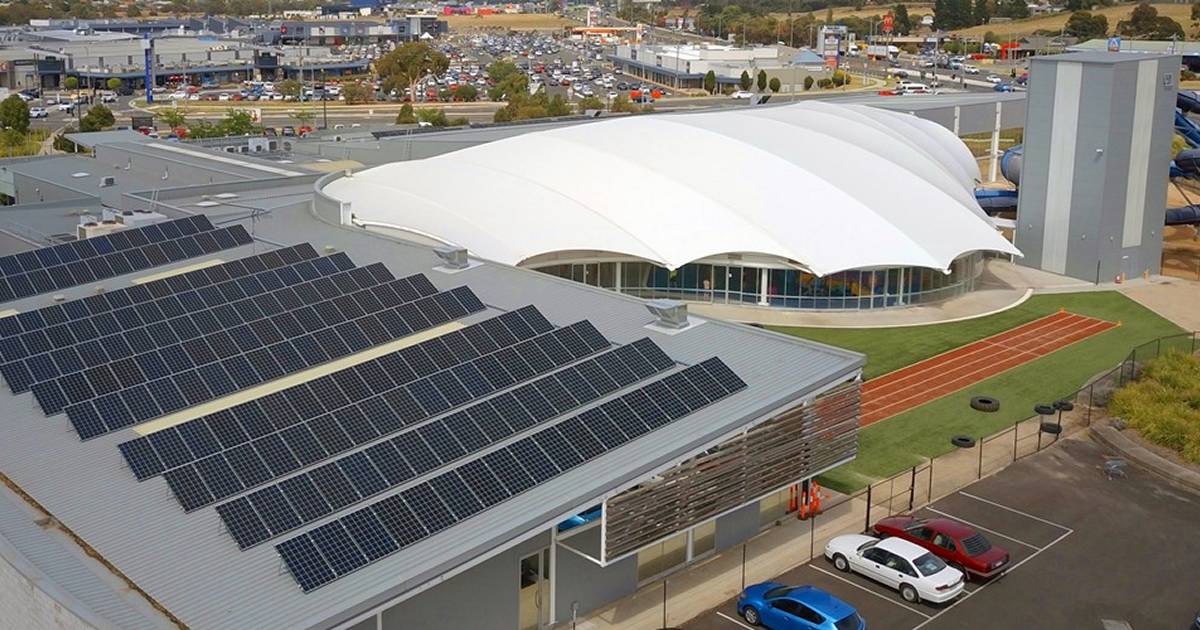
The City Of Greater Geelong’s ambitious Draft Climate Change Response Plan includes a target of zero net emissions by 2035 for the entire community.
The draft plan, which was endorsed for release by Council on Tuesday night for public exhibition and stakeholder and community consultation, contains 80 actions.
“Sustainable caretaking of our environment must be placed at the forefront of our decision-making, not because it is on trend or winning votes,” said Councillor Belinda Moloney, Chair of the Climate Change Action portfolio. “Council and councillors have a duty of care to educate ourselves and our community as to how to correct our actions and do our part to avoid widescale catastrophic climate-related events.”
Renewable energy of course features heavily among the actions in the plan, including:
- Actively discouraging gas infrastructure in new developments and support of renewable alternatives by 2022.
- Supporting community-owned renewable energy initiatives.
- Supporting community-based programs enabling economies-of-scale procurement of renewable technology (e.g. PV bulk buys)
- Investigating and implementing additional ways of supporting greater uptake of renewables for Geelong’s business and community by 2023
- Supporting the establishment of a regional renewable energy research and development hub that will also provide related education across the region.
It’s looking like the time ahead will be an even busier one for Geelong solar installers. There are certainly plenty of rooftops without solar panels in the region currently that could benefit from the emissions and energy cost reduction solar provides. According to the Australia Photovoltaic Institute (APVI), a whisker under 20% of dwellings in the local government area have solar installations.
City Of Greater Geelong Corporate Emissions Reduction
But what’s Council doing about its own emissions? While it has made significant inroads, the City of Greater Geelong was still accounting for just over one per cent of total community emissions. The City has committed to:
- All City-managed operations to reach net zero emissions by 2025.
- 100 per cent renewable electricity supply used for all City-owned and operated buildings, and streetlights this year (achieved).
- 95 per cent of methane emissions from Drysdale Landfill methane gas recovered for use in energy production by 2025.
- All City-owned light fleet vehicles to run on zero-emission power sources by 2027.
- Undertake an assessment of its gas infrastructure by next year
So, the City is walking the talk and leading by example. On the renewables front and in terms of solar energy self-generation, Council has installed more than 1MW of solar power capacity across 27 of its facilities to date – and there’s more to come. An example of an already operating installation is the 30kW PV array atop Leisurelink Waurn Ponds, pictured above, that was installed last year.
For the energy shortfall not supplied by solar PV and other on-site renewable sources, this is covered under a Victorian Energy Collaboration (VECO) Power Purchase Agreement.
Feedback on the Draft Plan closes on August 24. After review of the submissions, the plan will be finalised and then Geelong Council endorsement sought in October this year. The Draft Plan can be viewed here and information on submitting feedback here.

 RSS - Posts
RSS - Posts



This is leading by example. Net zero emissions by 2035
That gives them 15 more years to figure out how to stop using fossil fuels altogether by 2050
Plenty on time to add on a pumped hydro dam or two and a few big batteries.
Possibly add in a electric vehicle charging network or Hydrogen generation.
Tried posting a lengthy response earlier but it doesn’t seem to have gotten past the moderators so a short version.
With government investing in solar to cut its own power costs, whilst at the same time telling us a Solar Tax is required to discourage midday spikes and provide equality to those without solar etc, isn’t this only going to exacerbate the crisis?
Is this simply an attempt to force people to buy expensive battery systems, an attempt to get folk to rethink whether solar is the way of the future, or simply government showing they don’t know what they’re doing? Seems to be very mixed messaging!!!